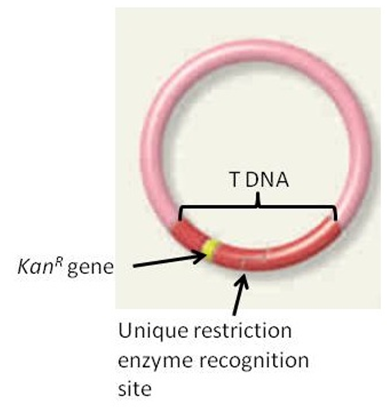__________ have shells made of calcium carbonate, while __________ have shells made of glassy silica.
Fill in the blank(s) with the appropriate word(s).
Foraminiferans; radiolarians
You might also like to view...
Explain how codon bias and GC content can be used to detect horizontal gene transfer within a genome
What will be an ideal response?
How do T cells contribute to the immune response?
A. through the production of antibodies B. through cell-mediated immunity C. by activating the complement system D. by removing pathogens by phagocytosis
You wish to express gene X in soybeans. You clone gene X into a Ti plasmid (shown below), transform the recombinant plasmid into Agrobacterium tumefaciens, treat soybean cells with the transformed A. tumefaciens, and place the cells on medium containing the antibiotics kanamycin and carbenicillin. What is the purpose of these two antibiotics?

A. The carbenicillin ensures that the cells contain a Ti plasmid and the kanamycin ensures that the cells have a recombinant Ti plasmid.
B. The carbenicillin and kanamycin both ensure that the cells picked up recombinant T DNA.
C. The kanamycin ensures that the cells contain recombinant T-DNA and the carbenicillin kills the A. tumefaciens.
D. The carbenicillin ensures that the cells contain recombinant T-DNA and the kanamycin kills the A. tumefaciens.
E. The carbenicillin and kanamycin both kill the A. tumefaciens.
What is the most fundamental difference between the innate immune system and acquired immune system?
A. the way in which pathogens are recognized B. the way in which pathogens are destroyed C. the types of cells that participate in each response D. the speed